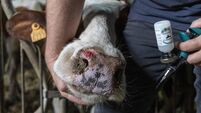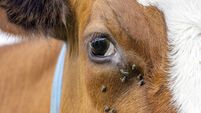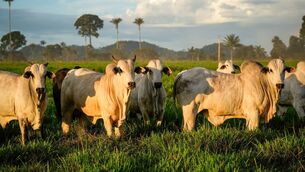Cattle reveal all if we only know what to watch for
Our cattle are however speaking to us all the time, through their behaviour.
For example, cows that are standing with their weight off a certain foot are generally lame. When cows lie down, however, they start to tell us even more.
Cows spend at least six hours per day eating, they walk to and from the parlour and water trough, following cows on heat, and standing in the collecting yard and parlour. In between, the cow needs to lie down.
For them to function normally and be healthy, they must behave like ruminants and chew the cud. Cows eating 20 kg of dry matter (50 to 60kg of fresh weight indoors forage) need 10 hours to chew the cud. They preferably do this when lying down and resting.
Ideally, at least 70% of cows lying down should be chewing. Every cud they bring up, they chew 50 to 60 times. Less than this suggests insufficient long fibre in the diet.
Throwing up cuds (cud balls which can be seen at the front of cubicles, for example) suggests digestive upset and possible acidosis.
Expansion of cow numbers in recent years has resulted in far more cows than cubicles available, on many farms. This stops those cows, when indoors, from expressing their natural behaviour.
There are other things that we should also consider. Is the cubicle large enough for the cows you now have? On most farms, cows have got a lot bigger (predominantly Holsteins) than 20 years ago.
How many of your cows are slow to go into cubicles? Is the lying area comfortable and dry? Which works best for you — saw dust, lime, straw, rubber mats or mattresses? Cow comfort is the important factor — cows lying on dirty cubicles or on slats have far higher chances of getting swollen hocks or mastitis.
How many attempts do your cows make to lie down? If the surface lacks sufficient grip, they will be nervous of falling, and will need to make several attempts to lie down.
There are also health clues from cows which you see lying down.
Milk fever — her muscle tone is poor, and she may be unable to stand.
Ketosis — insufficient energy and rumen fill can cause the cow to be slow to rise.
Tetany
Bloat
Leg injuries
Bruising, or a sore pelvis from a difficult calving.
Walking among cows lying down indoors may allow you to see if any have metritis. There are other reasons why cows may not be behaving normally — such as being frightened by dogs, a lot of traffic close by, stray voltage, draughts, access to feed, bullying etc. Knowing why the animal expresses herself in a particular way (lying down, standing etc) helps with stock management in the long run.












